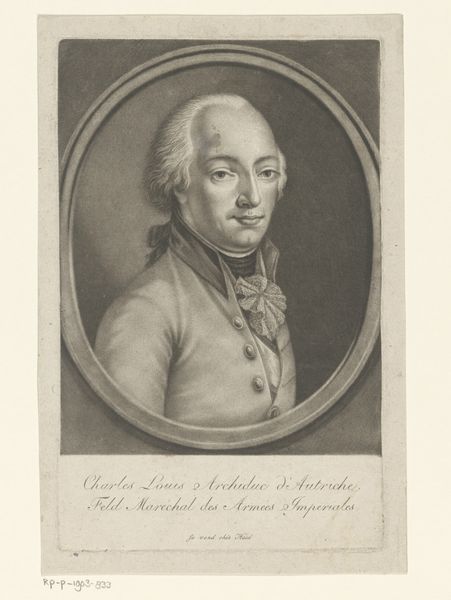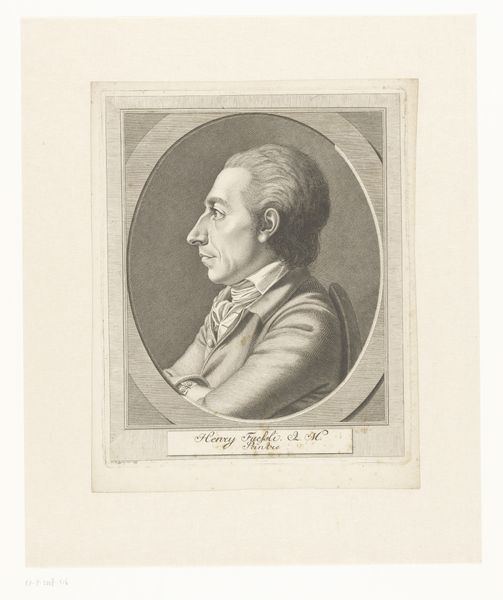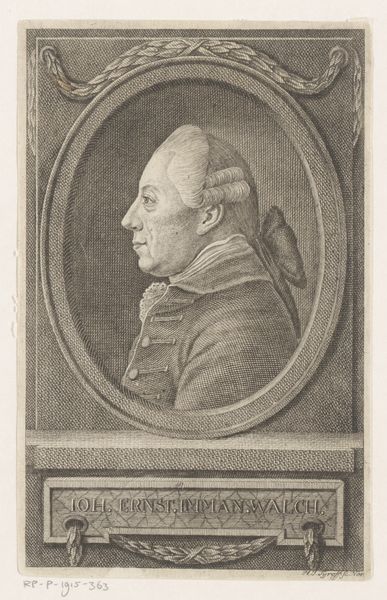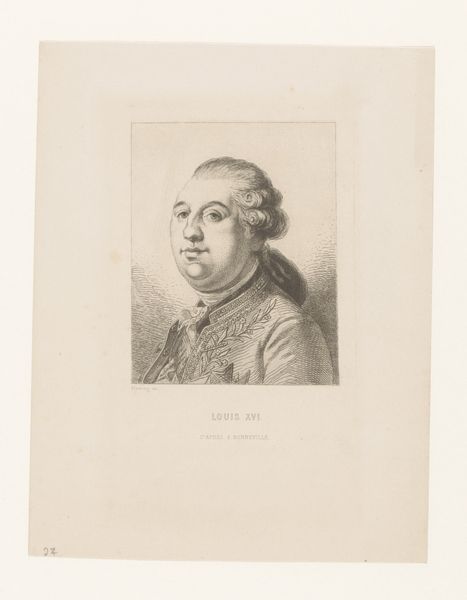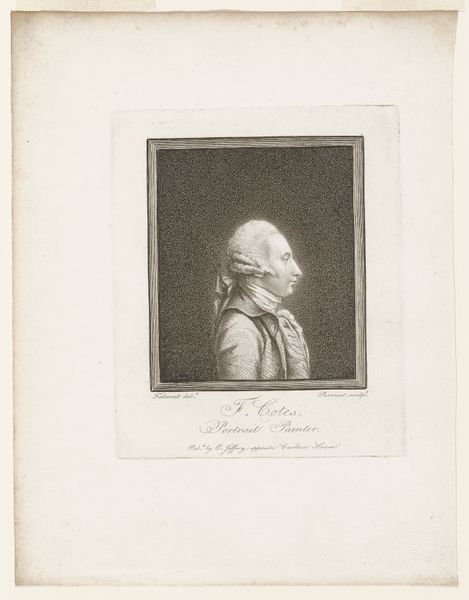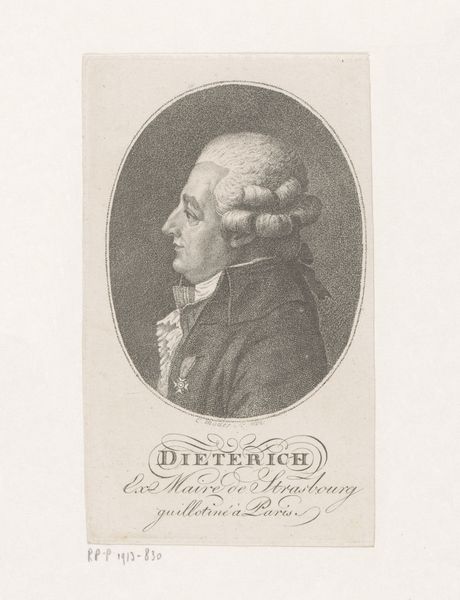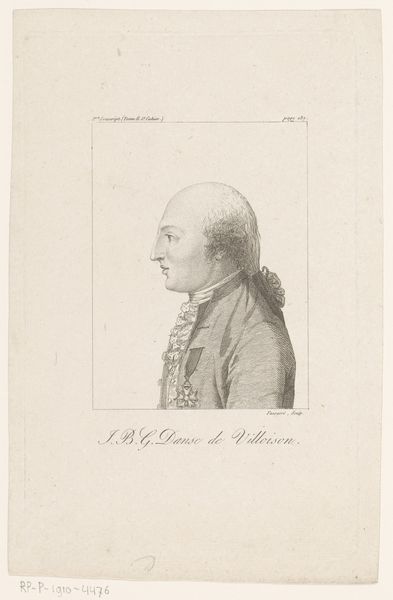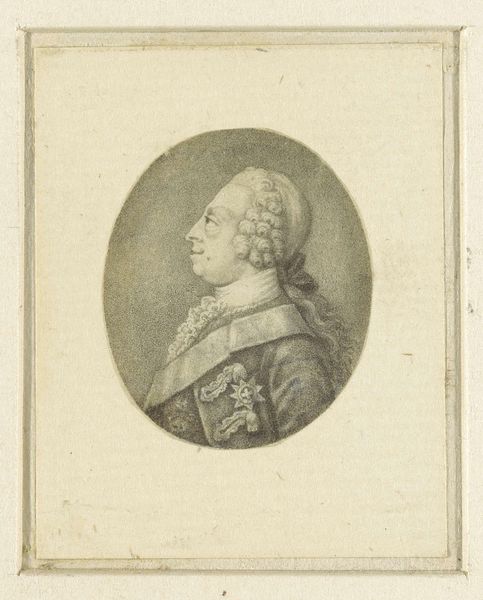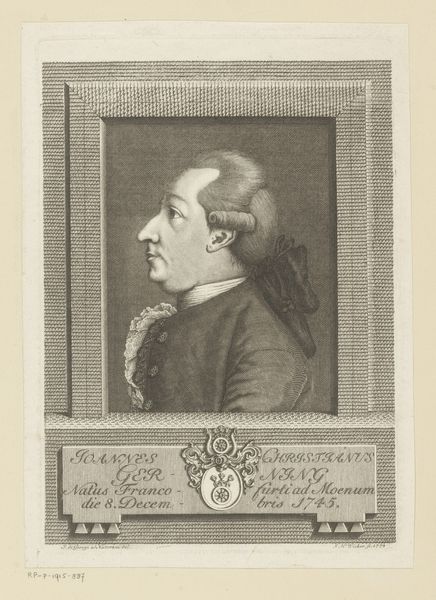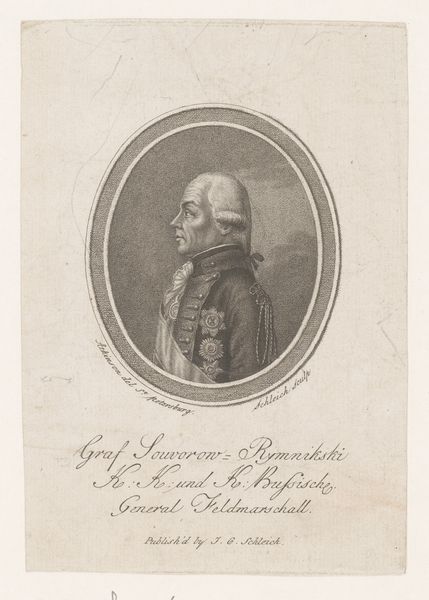
print, paper, engraving
#
portrait
# print
#
paper
#
classicism
#
engraving
Dimensions: 185 mm (height) x 166 mm (width) (plademaal)
Hans Heger made this portrait of Professor H. Callisen using etching, a printmaking technique that democratized image production in the 18th century. The fine lines you see weren't drawn directly onto the copper plate. Instead, Heger coated the plate with wax, drew through it with a needle, and then bathed the plate in acid. The acid bit into the exposed lines, creating grooves that would hold ink. This process allowed for intricate detail and subtle tonal variations, visible in the professor's powdered wig and the delicate shading of his face. Etching's rise coincided with the growth of a market for images, reflecting a shift towards mass production and consumption. While Heger likely possessed skilled artistry, the etching process allowed for a multiplication of his work, making it accessible to a wider audience beyond the elite circles of painted portraiture. This speaks to the changing social landscape, where knowledge and representation were no longer confined to the upper classes, but becoming increasingly available through printed media.
Comments
No comments
Be the first to comment and join the conversation on the ultimate creative platform.
